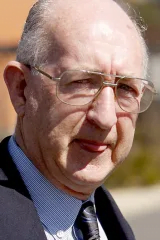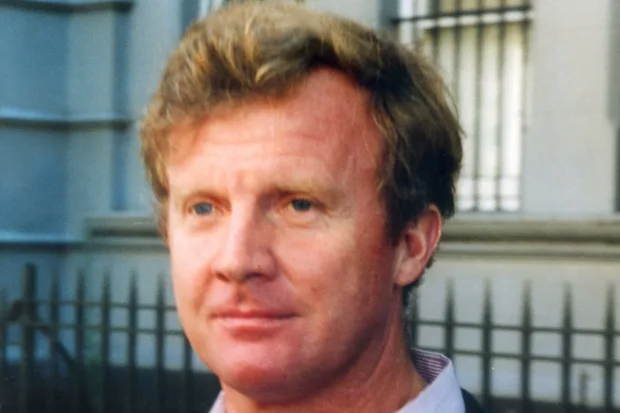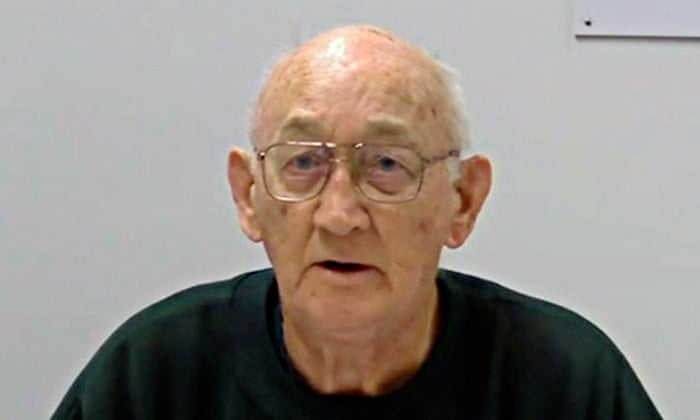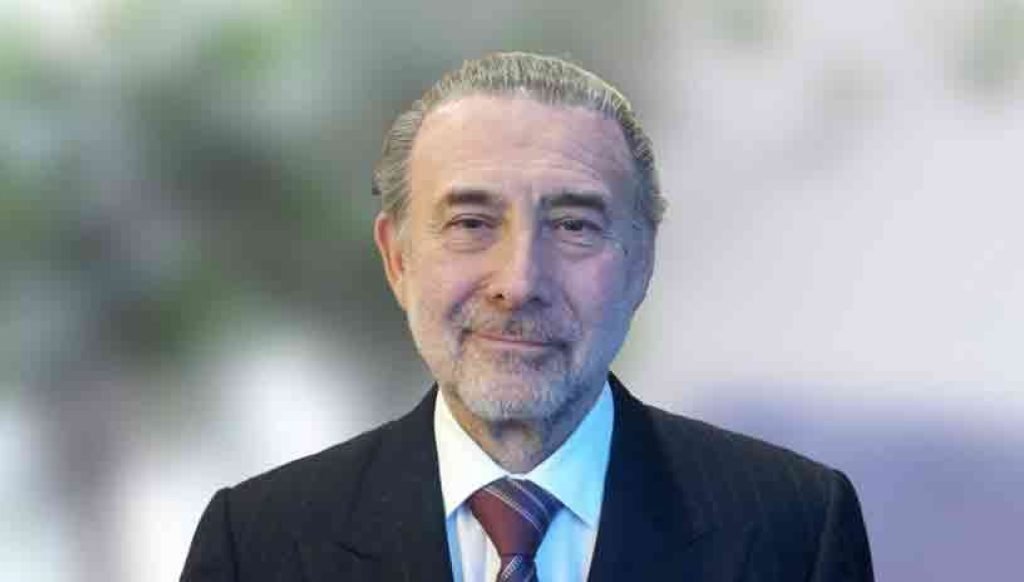Seven Virtues to STOP Sexual Abuse
The Seven Virtues to STOP Institutional Sexual Abuse
The Royal Commission into Institutional Sexual Abuse identified a number of systemic issues within institutions which have led to abuse occurring. Identifying the systemic issues provides us with an opportunity to act to address deficiencies within institutions and to ensure such issues are not repeated in the future. What might be some ways to stop institutional sexual abuse.
1. Good Governance
A lack of strong and effective governance provides the opportunity for abuse to occur within institutions. In trying to stop abuse it is essential for institutions to invest in their governance structures to ensure they have sufficient and effective policies and procedures, oversight and leadership to enforce safe systems within their institutions.
2. Strong Positive Cultural and Structural Factors
The culture and structure of the institution will have a strong impact on its ability to stamp out and prevent abuse. Fostering a culture of accountability at all levels, zero tolerance for abuse and ensuring people feel safe to approach those in positions of power with their concerns is essential to creating safe institutions.
3. Responsibility of those in Leadership to Act on Information, Not Dismiss Information and Ensure Appropriate Reporting to Others
Historically, in many instances within institutions, people in positions of power who were told and received knowledge of abuse occurring dismissed the information as lies or failed to believe those reporting abuse. In some instances, they chose to cover up abuse and insist that victims who reported such abuse never speak of it again.
It is essential that when a person who is in a position of authority or leadership within an organisation is made aware of an allegation of abuse that they treat the allegation seriously and act accordingly.
4. Act Decisively to End the Opportunity for Abuse and Do Not Move Perpetrators from Location to Location
A failing in many historical instances was when alerted to a perpetrator’s potential abuse, institutions moved the perpetrator to another location, in many instances another location that still provided exposure to children or other vulnerable persons. Critical information was not passed on and many times, the new venue to host the perpetrator would be entirely unaware there had been previous allegations made. Whilst removing an abuser from a situation where they have access to children or persons they have abused is appropriate, it is not appropriate to send them on to another institution where they may continue to offend.
5. Ensure Appropriate Discipline of Abusers to Stop Abuse
In many cases of abuse, perpetrators were not disciplined at all or suffered only minor and ineffective punishments. To ensure that abuse is not tolerated by any institution, it is imperative that institutions develop effective disciplinary policies and procedures and adhere to them. Discipline needs to be appropriate to the nature of the incident reported and be delivered in a timely manner to be effective.
6. Ensure Quality Record Keeping
Another factor that allows abuse to occur is a failure to keep adequate records. Historically, in many instances of abuse, adequate records were not kept of staff, personnel, students and other relevant persons involved with institutions. Records were also lost or destroyed.
It is essential that institutions ensure they implement robust policies and procedures for record-keeping which contain a sufficient level of details to identify persons, incidents, recording warnings and relevant information.
These records then need to be appropriately stored and consideration needs to be given to how to manage and maintain records over the long term and ensure their accessibility if required in the future.
7. Ensure Reporting to Child Protection Authorities and Police to Stop Abuse
The Royal Commission found that many instances of abuse were reported to institutions who then failed to report that information to relevant child protection agencies or police.
Institutions have a responsibility to develop policies and procedures to ensure that when incidents of abuse are reported to their members, staff and leaders, they are subsequently followed up and reported to the appropriate child protection authorities and police. In more recent years many jurisdictions the laws have been changed to ensure mandatory reporting of abuse, which has been extended to a wide range of occupations. Most recently, some jurisdictions have now moved to force priests who hear confessions of abuse to report that abuse to authorities.
By addressing these issues, institutions can take a strong stance to safeguard not only themselves, but everyone they interact with to ensure that abuse is prevented and for the betterment of society as a whole.
The detrimental effects of a systemic failure can be seen in the below case study.
Case Study: Ballarat – Victoria
The Royal Commission into Institutional Responses to Child Sexual Abuse reported the shocking extent of abuse that occurred through schools, religious diocese and care homes throughout Victoria over a number of decades (Ballarat sexual abuse).
 One of the reported areas with the highest prevalence of child sexual abuse within institutional settings was found to have been in Ballarat, Victoria. Case Study No. 28 reports details of the egregious conduct of religious brothers and teachers, who were part of the Christian Brothers religious order and Catholic Church who monstrously failed their students, their communities and their faith.
One of the reported areas with the highest prevalence of child sexual abuse within institutional settings was found to have been in Ballarat, Victoria. Case Study No. 28 reports details of the egregious conduct of religious brothers and teachers, who were part of the Christian Brothers religious order and Catholic Church who monstrously failed their students, their communities and their faith.
A number of predators, abused their positions as trusted teachers who were tasked with the care and control of children, mainly young boys, in their formative years. Whilst they were supposed to be educating these boys, they were using their positions to abuse the children in their care.
The Christian Brothers have a long history of establishing and running schools in Australia, many since the late 1800s.
The Royal Commission identified a number of Christian Brothers schools within the geographical boundaries of the Catholic Church Diocese of Ballarat at which abuse occurred, including:
- St Patrick’s Primary School, Ballarat (from 1924 to 1982 then amalgamated with another primary school)
- St Alipius Boys’ School, Ballarat (from 1882 to 1976 then amalgamated with another primary school)
- St Patrick’s College, Ballarat (from around 1893 to 2002, when a lay principal took over)
- St Paul’s Technical College, Ballarat (from 1948 to 1995 then amalgamated with two other schools)
- St Joseph’s Primary School, Warrnambool (operated until 1981)
- St Joseph’s Christian Brothers College, Warrnambool (from 1912 to 1991, with Christian Brothers remaining working at the school until 1998)
What sets Ballarat apart from other areas of the country in which abuse occurred is the prolific nature of the offending, unhindered by those in the school or church authority.
Of the people known to have made a claim against the Christian Brothers in relation to schools operated by them in the Ballarat area, 100% of the claimants were male.[1] 94% were under the age of 13 years old at the time of the alleged abuse. The remaining 6% were between 13 and 18 years of age.[2] The 1970s is reported as the decade with the highest number of reported incidents of alleged abuse in Ballarat, with two thirds of those who came forward alleging the abuse occurred during this period.[3]
In some instances students were being abused by more than one teacher and in many events, over a period of years.[4]
136 victims of sexual abuse were listed in the report. 21 individual perpetrators of abuse were named. 20 people, priests and non-ordained members of a religious order were subject to one or more claims of sexual abuse in relation to the Diocese of Ballarat.[5]
At St Alipius Boys’ School in Ballarat, it was revealed to the Commission that in 1971, that all male teachers and the school chaplain were molesting students.[6]
A number of former teachers and Christian Brothers who taught at St Alipius Ballarat were identified as perpetrators of abuse. These included:
- Brother Edward Dowlan (also known as Ted Bales)
- Brother Robert Best
- Brother Gerald Leo Fitzgerald (deceased)
Brother Robert Best

Best was born in 1941 and was the headmaster for a period at St Alipius in Ballarat. Brother Robert Best was sentenced for a number of child sex offences in 1996, 1998, 2010, 2011 and 2017. He has been convicted of molesting boys whilst teaching at St Alipius in Ballarat, St Leo’s College in Box Hill and St Joseph’s College in Geelong.[7] Best had the highest number of claims against a Christian Brother recorded by the Royal Commission with 46 claims. Alleged incidents of abuse were said to have occurred between 1963 and 1987.[8] His first known incidents of abuse are said to have occurred when Best was only 22 years old. He currently resides in gaol.
Reported incidents of abuse perpetrated by Best were said to have occurred in the following years, at the following schools:
Year Institutions
1963 St Alipus’ School, Ballarat East, Victoria
1964 St Alipus’ School, Ballarat East, Victoria
1965 St Alipus’ School, Ballarat East, Victoria
1967 St Alipus’ School, Ballarat East, Victoria
1968 St Alipus’ School, Ballarat East, Victoria
1969 St Alipus’ School, Ballarat East, Victoria
1969 St Alipus’ School, Ballarat East, Victoria
1969 St Alipus’ School, Ballarat East, Victoria
1969 St Alipus’ School, Ballarat East, Victoria
1970 St Alipus’ School, Ballarat East, Victoria
1970 St Alipus’ School, Ballarat East, Victoria
1970 St Alipus’ School, Ballarat East, Victoria
1970 St Alipus’ School, Ballarat East, Victoria
1970 St Alipus’ School, Ballarat East, Victoria
1970 St Alipus’ School, Ballarat East, Victoria
1970 St Patrick’s College, Ballarat, Victoria
1970 St Alipus’ School, Ballarat East, Victoria
1970 St Alipus’ School, Ballarat East, Victoria
1971 Ballarat East Parish, Ballarat East, Victoria
1971 St Alipus’ School, Ballarat East, Victoria
1971 St Alipus’ School, Ballarat East, Victoria
1971 St Alipus’ School, Ballarat East, Victoria
1971 St Alipus’ School, Ballarat East, Victoria
1972 St Alipus’ School, Ballarat East, Victoria
1972 St Alipus’ School, Ballarat East, Victoria
1972 St Alipius’ School, Ballarat East, Victoria; St Patrick’s College, Ballarat, Victoria
1973 St Leo’s College, Box Hill, Victoria
1974 St Leo’s College, Box Hill, Victoria
1974 St Leo’s College, Box Hill, Victoria
1974 St Leo’s College, Box Hill, Victoria
1975 St Leo’s College, Box Hill, Victoria
1975 St Leo’s College, Box Hill, Victoria
1975 St Leo’s College, Box Hill, Victoria
1975 St Leo’s College, Box Hill, Victoria
1976 St Leo’s College, Box Hill, Victoria
1978 St Leo’s College, Box Hill, Victoria
1978 St Leo’s College, Box Hill, Victoria
1978 St Leo’s College, Box Hill, Victoria
1979 St Leo’s College, Box Hill, Victoria
1982 St Leo’s College, Box Hill, Victoria
1983 St Leo’s College, Box Hill, Victoria
1983 St Leo’s College, Box Hill, Victoria
1984 St Leo’s College, Box Hill, Victoria
1985 St Leo’s College, Box Hill, Victoria
Source: https://www.childabuseroyalcommission.gov.au/sites/default/files/INT.0010.001.0001_R.pdf, page 18, paragraph 59
Brother Edward Dowlan

Brother Edward Dowlan, also known as Ted Bales, is a Christian brother born in 1938. He abused a number of boys whilst working as a teacher. Brother Dowlan is alleged to have abused at least 28 boys between 1969 and 1984.[9] Dowlan was convicted in 1996 and again in 2015 in relation to child sex offences.
Dowlan was moved from school to school. The failure to remove Edward Dowlan / Ted Bales from teaching and subsequently appointing him to other schools was in the Royal Commission’s opinion “inexcusably wrong”.[10] The years of alleged instances of abuse and the schools he was working at the time are listed below:
Year Institutions
1970 St Alipius’ School, Ballarat East, Victoria
1970 St Alipius’ School, Ballarat East, Victoria; St Patrick’s College, Ballarat, Victoria
1970 St Alipius’ School, Ballarat East, Victoria
1971 Ballarat East Parish, Ballarat East, Victoria
1971 St Alipius’ School, Ballarat East, Victoria
1971 St Alipius’ School, Ballarat East, Victoria
1971 St Alipius’ School, Ballarat East, Victoria
1972 St Thomas More College, Nunawading, Victoria
1972 St Thomas More College, Nunawading, Victoria
1972 St Thomas More College, Nunawading, Victoria
1972 St Thomas More College, Nunawading, Victoria
1972 St Thomas More College, Nunawading, Victoria
1972 St Patrick’s College, Ballarat, Victoria
1972 St Alipius’ School, Ballarat East, Victoria; St Patrick’s College, Ballarat, Victoria
1972 St Thomas More College, Nunawading, Victoria
1973 St Patrick’s College, Ballarat, Victoria
1973 St Patrick’s College, Ballarat, Victoria
1974 Wendouree Parish, Wendouree, Victoria; Not applicable, Warrnambool, Victoria
1974 St Patrick’s College, Ballarat, Victoria
1974 St Patrick’s College, Ballarat, Victoria
1974 St Patrick’s College, Ballarat, Victoria
1974 St Joseph’s College, Warrnambool, Victoria
1974 St Patrick’s College, Ballarat, Victoria
1980 Parade Preparatory School, Alphington, Victoria
1981 Cathedral College, East Melbourne, Victoria
1982 Cathedral College, East Melbourne, Victoria
1983 Cathedral College, East Melbourne, Victoria
1984 Cathedral College, East Melbourne, Victoria
Gerald Leo Fitzgerald
Brother Gerald Leo Fitzgerald was born 1902 and deceased in 1987, is alleged to have abused boys at St Vincent’s Boys’ Home in South Melbourne in 1950 and then at St Alipius’ School, Ballarat East, between 1963 and 1975. The Royal Commission found that his appointment to a teaching position should have never occurred. After his first instance of alleged abuse in 1950, there was already sufficient knowledge of concerns regarding his behaviour that any satisfactory system in place should have removed him or excluded him from teaching in schools.[11]
Case Study No. 28 also identified the school chaplain of St Alipius, a priest from the local St Alipius church, as a perpetrator of abuse.
The school chaplain was notorious and prolific offender, Gerald Risdale. [12]
Gerard Risdale
 Risdale was identified by the Royal Commission as a priest who was the subject of claims in relation to the Diocese of Ballarat.[13] The Royal Commission identified 78 claims of child sexual abuse were made against Gerald Risdale.[14]
Risdale was identified by the Royal Commission as a priest who was the subject of claims in relation to the Diocese of Ballarat.[13] The Royal Commission identified 78 claims of child sexual abuse were made against Gerald Risdale.[14]
He was convicted of criminal offences relating to 65 victims and has been gaoled four times, for a period of over 20 years, for more than 130 offences.[15] A number of civil claims have been brought against the Catholic Church as a result of Risdale’s offending, including by his own nephew, who approached the Catholic Church about the abuse. The Catholic Church has been forced to admitting they had knowledge that Risdale had abused a child/children in 1975 and failed to act.
Risdale was regularly moved throughout his time as a priest. This in itself should have served as a red flag to anyone in authority to stop abuse.
List of Gerald Risdale’s Appointments within the Catholic Church:
Source: Royal Commission into Institutional Responses to Child Sexual Abuse, Report of Case Study No. 28 (unredacted), at Appendix C, page 440.
Whilst the above are notable offenders, a number of Christian Brothers identified as alleged perpetrators of abuse by the Royal Commission continue to have their names anonymized as a result of ongoing criminal investigations. The Royal Commission’s efforts to stop abuse through its investigation into the incidents in Ballarat gained worldwide attention when George Pell appeared to give evidence via video link from Rome. Pell’s dealings with Risdale were scrutinized. After George Pell was successful in overturning his criminal conviction in the High Court, the unredacted version of Case Study 28 was finally made publicly available.
How could this happen?
The Royal Commission Case Study No. 28 identified a number of systemic issues which arose in Ballarat.[16] These included:
- the governance of the Diocese and of the Christian Brothers, which was deficient and a crucial factor that allowed the abuse of children to continue for a lengthy period of time. The Royal Commission Case Study No. 28 found systems and procedures in place were completely inadequate and unsatisfactory to stop abuse and thus allowed the abuse to happen.[17]
- the effect of cultural, structural and factors present within the Diocese, the Christian Brothers and their institutions on the response to allegations of child sexual abuse meant that perpetrators were not swiftly and sufficiently disciplined and removed from their positions, but moved around in a bid to keep the abuse quiet and minimise any potential harm to the reputation of the Catholic Church. Priests and Brothers were often highly respected within their communities and perceptions of their standing within the community and the failure to grasp the seriousness of abuse lead to the high levels of abuse in the area.
- knowledge of senior Church personnel of allegations of sexual abuse of children by priests was evident in many cases. Complaints were made by victims, parents and others from the community and senior Church personnel were made aware of allegations over time but they either dismissed the information or failed to share that knowledge with others higher up.
- movement and treatment of priests and religions accused of child sexual abuse. Instead of addressing the issue directly and removing the perpetrators for the safety of the children, those in positions of authority simply moved the perpetrators to different schools, parishes and roles within the Church, failing to arrest the behaviour and stop the abuse from occurring again. The Royal Commission expressed sentiments that it was Inexcusably wrong to move offenders from one school to the next.
- disciplinary action against priests and religions accused of child sexual abuse. There was a severe lack of appropriate disciplinary action.
- reporting allegations of child sexual abuse to child protection authorities and the police. The Catholic Church and schools chose to keep the issues “in-house” rather than expose the perpetrators to the full force of the law and risk reputational damage to the various schools, Diocese and Catholic Church.
- recordkeeping within religious orders, Catholic Diocese and schools was insufficient, poorly maintain and in many instances, lost or destroyed with the passage of time. If a priest was transferred, the true reasons for such transfers were never recorded, nor were others warned or advised of the potential issues.
- the impact of child sexual abuse on families and the community is devastating. The lack of belief in survivors and failure to act compounded the problem for many survivors. Psychological injury, damage to intimate and social relationships and negative impact on education and employment prospects are just some of the ways in which individuals, their families and their communities are impacted by abuse.
The Royal Commission highlighted truly shocking abuse, but it is only a sample of the full extent of abuse that occurred. The true number of perpetrators and survivors of abuse is unlikely to be fully accounted. Subsequent changes in the law as a result of the Royal Commission trying to stop abuse have now given survivors of abuse the opportunity to pursue claims against the institutions that failed them.
Stop Abuse. If you or someone you know is living with the trauma of Institutional Child Sexual Abuse, we urge you to seek professional help. Time shows us that these traumas of childhood live on into adulthood, and impact the victims and those around them over decades. It is important to know that there are those in the community who do stand up, do speak out, and do advocate for the protection of the vulnerable. If you choose to seek compensation speak to us and we will listen in the utmost confidence, and assist you wherever we can. Please click here to submit a callback request. Also, do not hesitate to call Ross Koffel on 02 9283 5599 for assistance.
[1] https://www.childabuseroyalcommission.gov.au/sites/default/files/INT.0010.001.0001_R.pdf, page 14 at paragraph 42.
[2] https://www.childabuseroyalcommission.gov.au/sites/default/files/INT.0010.001.0001_R.pdf, page 15 at paragraph 44.
[3] https://www.childabuseroyalcommission.gov.au/sites/default/files/INT.0010.001.0001_R.pdf, page 15 at paragraph 46.
[4] https://www.childabuseroyalcommission.gov.au/sites/default/files/INT.0010.001.0001_R.pdf, page 15 at paragraph 47.
[5] https://www.childabuseroyalcommission.gov.au/sites/default/files/REPT.0009.001.0001.pdf at paragraph 16.
[6] https://www.abc.net.au/news/2015-05-19/child-abuse-inquiry-begins-ballarat-hearings/6479902
[7] https://www.heraldsun.com.au/news/law-order/victorian-paedophile-and-christian-brother-robert-best-admits-molesting-20-more-young-boys/news-story/a270c6af45fbfacd4bf3f18e54abdd5a
[8] https://www.childabuseroyalcommission.gov.au/sites/default/files/INT.0010.001.0001_R.pdf at paragraph 55.
[9] https://www.childabuseroyalcommission.gov.au/sites/default/files/INT.0010.001.0001_R.pdf, page 20 at paragraph 66.
[10] https://www.childabuseroyalcommission.gov.au/sites/default/files/file-list/un-redacted_report_of_case_study_28_-_catholic_church_authorities_in_ballarat.pdf, page 37
[11] https://www.childabuseroyalcommission.gov.au/sites/default/files/file-list/un-redacted_report_of_case_study_28_-_catholic_church_authorities_in_ballarat.pdf, page 24
[12] https://www.childabuseroyalcommission.gov.au/sites/default/files/file-list/un-redacted_report_of_case_study_28_-_catholic_church_authorities_in_ballarat.pdf, page 103
[13] https://www.childabuseroyalcommission.gov.au/sites/default/files/REPT.0009.001.0001.pdf
[14] https://www.childabuseroyalcommission.gov.au/sites/default/files/REPT.0009.001.0001.pdf at paragraph 38.
[15] https://www.abc.net.au/news/2015-05-19/child-abuse-inquiry-begins-ballarat-hearings/6479902
[16] Source: Royal Commission into Institutional Responses to Child Sexual Abuse stop abuse, Report of Case Study No. 28 (unredacted), at Appendix C, page 455.
[17] https://www.childabuseroyalcommission.gov.au/sites/default/files/file-list/un-redacted_report_of_case_study_28_-_catholic_church_authorities_in_ballarat.pdf at page 28


6 replies to Seven Virtues to STOP Sexual Abuse
Abuse in Psych Ward in Townsvilles Ward 15. At the age of 13 in 1973
Mine was not an institution.it was my stepdad and it was reported to the police but then dismissed due to lack of evidence cos I couldn’t remember the exact date I was considerably stressed and barely a teenager. I’m now 40 and still so mixed up. I have been told that unless he has assets nothing can be done. he is still living. I’ve tried reaching out b4 but haven’t been brave enough to answer Ur call
Hello Emma, I to am a survivor, 13years my step father had to do as he pleased. Only over the past few years I discovered that 6 of my sister’s were also his victims & one of my brother’s (his biological son) as well. I don’t know what these people who make the laws are thinking, exact dates, places & so on. As a child scared, hurt, confused, ashamed, battered you do not think oh I’d better jot that incident down. Anyway
I am still suffering because of what happened to me. But because they are dead, you will not care about about Me at all. I suffer from PTSD because of this. My sister & brother were victims also 😞
Hello , like others I too have not been brave enuf to answer your calls . However I am ready to take back my life and strength if that is possible. My first memories of life at aged 4 are of being molested and raped by 3 sibling brothers that lived next door to me in Woodridge Qld in 1982. The next 3 years of my life were daily forms of sexual abuse. As an adult I have been diagnosed with B.P.D and 4 other disorders . I have suffered immensely as an adult and so have my loved ones. The police told me about 10 years ago that in 1982 there were no laws to charge these boys with as when I was 4 the oldest perpetrator was 10yrs of age . Today the age 10 is considered a culpubal age for rape of a minor. Due to my abuse I have had so many struggles including addiction and trouble with holding a job and things like emotional regulation. I want these men to be held accountable. They may be predators I’m the community as adults . Is there any validation or help for me .